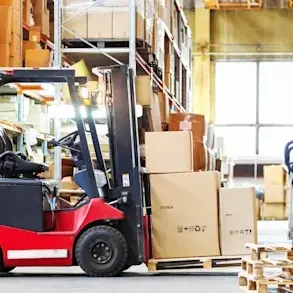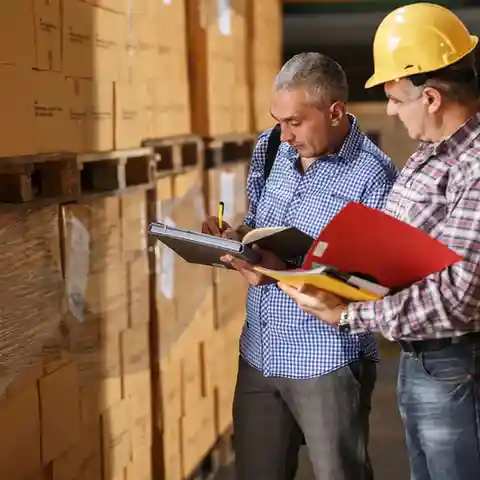The Role Of Technology In Modern Warehousing: Enhancing Efficiency And Accuracy
Introduction: A Glimpse into Tomorrow's Warehouse
Picture a bustling warehouse in India, where the rhythmic sounds of activity echo through the vast space. Workers, once manually sorting and stacking goods, now collaborate seamlessly with advanced machinery. Autonomous robots glide effortlessly between aisles, picking and packing with precision. Drones buzz overhead, conducting inventory checks with flawless accuracy. This transformation is not a distant dream but a present-day reality, where tradition meets innovation.
In the vibrant landscape of Indian commerce, the evolution of warehousing technology is revolutionizing how goods are stored, managed, and shipped. As e-commerce continues to surge, especially during festivals like Diwali and Dussehra, the demand for more efficient, accurate, and cost-effective warehousing solutions is higher than ever. This blog explores the pivotal role of technology in modern warehousing, highlighting key innovations and their impact on efficiency and accuracy.
The Technological Revolution in Warehousing
1. Automation and Robotics
Automation has become the cornerstone of modern warehousing, driving significant improvements in efficiency and accuracy:
- Automated Guided Vehicles (AGVs): These self-driving vehicles navigate through warehouses, transporting goods from one location to another. AGVs can reduce labor costs by up to 70% and increase productivity by 50%.
- Robotic Picking Systems: Robots equipped with advanced sensors and machine learning algorithms can pick and pack items with high precision, reducing picking errors by up to 85%.
2. Warehouse Management Systems (WMS)
A robust Warehouse Management System is essential for optimizing warehouse operations:
- Inventory Management: WMS solutions offer real-time visibility into inventory levels, reducing stockouts by 30% and overstock situations by 20%.
- Order Fulfillment: Advanced WMS can streamline order processing, improving order accuracy by up to 99.9% and reducing order cycle times by 50%.
3. Internet of Things (IoT)
IoT devices are transforming warehouses into interconnected hubs of efficiency:
- Smart Shelves: Equipped with sensors, smart shelves can monitor inventory levels in real-time, triggering automatic reorders and reducing manual checks .
- Asset Tracking: IoT-enabled trackers provide real-time location data for goods, reducing lost items by 30% and improving asset utilization by 25% .
Enhancing Accuracy with Advanced Technologies
1. Artificial Intelligence (AI) and Machine Learning (ML)
AI and ML are driving new levels of accuracy in warehousing operations:
- Predictive Analytics: AI algorithms analyze historical data to predict demand trends, reducing forecasting errors by up to 40% .
- Quality Control: ML-powered systems can inspect goods for defects with up to 98% accuracy, ensuring higher quality standards .
2. Drones and Aerial Technologies
Drones are revolutionizing inventory management and warehouse inspections:
- Inventory Audits: Drones can conduct inventory audits 50 times faster than manual methods, with an accuracy rate of over 99% .
- Surveillance: Aerial drones enhance security by providing real-time surveillance, reducing theft and unauthorized access .
Overcoming Challenges with Technology
While technology offers immense benefits, integrating new systems into existing warehouse operations can pose challenges:
- Initial Costs: The upfront investment in advanced technologies can be significant, but the long-term benefits often outweigh the costs.
- Training and Adaptation: Employees may require training to adapt to new technologies, but ongoing support and training programs can ease this transition.
Navigating the Path Ahead: Challenges and Opportunities
Harnessing AI and ML: A Strategic Mandate
- Strategic Fusion: The infusion of AI and ML into logistics transcends mere technological advancement; it demands substantial investments in technology and skill development.
- Fostering Innovation: It requires nurturing a culture that champions innovation and perpetual learning.
Harmonizing Technology with Human Expertise
- Augmenting Human Abilities: Despite the transformative potential of AI and ML, human intuition remains indispensable, especially in strategic decision-making and intricate customer interactions.
- Synergistic Collaboration: Striking a harmonious balance between technology and human wisdom is essential for maximizing the dividends of AI and ML in logistics.
Ethical Considerations and Data Security
- Ethics in Technology Adoption: As AI and ML usage expands, ethical concerns take center stage.
- Securing Data: Safeguarding customer data against breaches is imperative, demanding vigilant attention from logistics firms.
Conclusion: Embracing the Future of Warehousing
Incorporating technology into contemporary warehousing isn't merely fashionable; it's imperative for businesses vying to retain competitiveness in the digital era. Through the adoption of automation, IoT, AI, and other cutting-edge advancements, warehouses can attain unparalleled levels of precision and efficiency, elevating customer contentment and fueling organizational expansion.
Peering into the horizon, the ongoing technological progression pledges to revolutionize warehousing, ushering in smarter, nimble, and exceedingly efficient operations. For enterprises prepared to embrace these innovations, the future brims with boundless opportunities for advancement and triumph.



